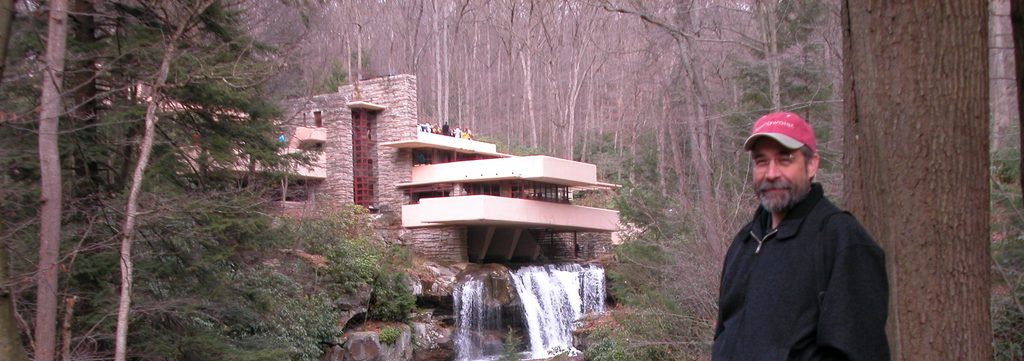In my last post discussing the works of Alvar Aalto, I made the assertion that Frank Lloyd Wright was and is the greatest architect… ever.
While there’s no clear consensus as to what, specifically, is the criterion for measuring architectural greatness, there are certain elements on which we can agree when selecting Wright:
- Influence on current and future generations
- Innovation and quality of completed work
- The ability to design multiple project types of various scales and budgets
- Use of unique materials
- Advocacy for the early adoption of innovative materials
- Incorporation of all the elements of architecture in a single project
- Ability to get designs built
- Timelessness of projects
- Popularity during his lifetime
- Place in the history of architecture
- Understanding of the human element in design
- Mastery and innovation with structural design
- Coherent evolution of designs over time
- Prolific volume of built and unbuilt work
- Skill with synthesizing form and function
- Contribution to the evolution of sustainable design
- Aesthetic appeal
Frank Lloyd Wright bequeathed a legacy of architectural designs to the world that is astonishing in its diversity. When you consider his consistent quality over time, his transformation and the incredible evolution of design brilliance, he is simply unmatched. His professional career spanned the early 1900s until his death in 1959. The quality and quantity of his work – both through the designs he created and were built and those that have yet to be built – is staggering. Even more so when you consider the entirety of his work was exactly that; the architectural design contributions of one man. Wright’s incredibly diverse design spectrum included custom homes, single-family budget-conscious homes, office buildings of all scales, a warehouse, a gas station, resorts, public works, bridges, museums, performing arts centers, and entire college campuses.
To be fair, Wright’s reign wasn’t that long ago; his influence and life is still pretty fresh in our minds. Yet there is no doubt he will stand the test of time. Frank Lloyd Wright was an influencer. In the later years of his life, UC Berkley conducted an intensive study on architects and creativity that was published in “The Creative Architect – Inside the Great Midcentury Personality Study.” The researchers surveyed and interviewed dozens of the leading architects of the 1950s, most of whom ranked Frank Lloyd Wright as both the most creative and influential.
Wright’s understanding of human psychology and his use of biophilic design to connect homeowners to their natural surroundings was trailblazing. His use of prospect and refuge is one that is a theme in my own work. There is a primal connection with our evolutionary psychology to have preferences for certain types of spaces that offer both prospect and refuge. Through these, one finds an affinity for environments where you can see without being seen, where our ancestors could hunt without being hunted. By connecting our built environment to nature we reaffirm our need for achieving the balance of outlook and enclosure.
One of the best examples of Wright’s creative brilliance and aptitude in solving complex architectural challenges lies within the design of the S.C. Johnson & Company’s headquarters in Racine, Wisconsin, also known as the Johnson & Johnson Wax Building. He designed an innovative system of glass tubes to diffuse light within the space, set between elegant concrete columns, referred to as lily pads. The local building officials denied Wright’s design, claiming that they were not structurally sound. Wright demonstrated the structural viability of his design with a full-scale test of one of the columns that was loaded with sandbags. The column far exceeded the required weight placed upon it, granting Wright the ability to move forward with his design for the office building and research center.
Wright designed over 1,000 buildings during his lifetime, of which 532 were completed. Among the unbuilt designs is one in particular that holds meaningful significance for me. But that is a story for another time.

